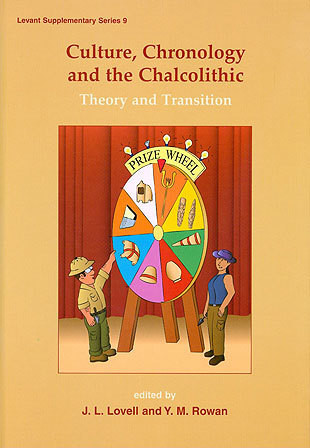Culture, Chronology and the Chalcolithic (Hardback)
Imprint: Oxbow Books
Series: Levant Supplementary Series
Pages: 208
Illustrations: 87 b/w & col illus
ISBN: 9781842179932
Published: 31st March 2011
Script Academic & Professional
Series: Levant Supplementary Series
Pages: 208
Illustrations: 87 b/w & col illus
ISBN: 9781842179932
Published: 31st March 2011
Script Academic & Professional
You'll be £12.95 closer to your next £10.00 credit when you purchase Culture, Chronology and the Chalcolithic. What's this?
+£4.99 UK Delivery or free UK delivery if order is over £40
(click here for international delivery rates)
Order within the next 1 hour, 27 minutes to get your order processed the next working day!
Need a currency converter? Check XE.com for live rates
(click here for international delivery rates)
Order within the next 1 hour, 27 minutes to get your order processed the next working day!
Need a currency converter? Check XE.com for live rates
To some, the Chalcolithic (4700/4500-3700/3600 BC cal.), as the first period with metallurgy, large sprawling villages, rich mortuary offerings, and cult centres, represents a developmental stage on the road to the urban Bronze Age, the "dawn of history". Others have called it 'the end of prehistory'. More recent scholarship focuses upon the diversification of the subsistence economy, elaborated craft production, and expanded networks for resource acquisition. Many of today's Chalcolithic specialists were taught by biblical archaeologists, such that the culture history paradigm remains deeply embedded. This volume grew out of a workshop held in Madrid in 2006 and aims to kick start a dialogue about how to move beyond culture history and chronology in order to re-engage with larger theoretical discourses. A vast swathe of research in the region ignores these issues and considers theory to be irrelevant. One has the impression that the political realities of the region (including a predilection for biblical archaeology) has left a large proportion of archaeologists in the region, including prehistorians, lost without a map. Contributors to this volume recognize that culture history is the platform upon which current archaeological research is discussed but differ in the degree of emphasis placed on previously defined entities or phases. Delineating levels of difference and similarity between temporal boundaries is critical in this process. The two themes of this volume - culture and chronology - combine the need for theoretical engagement with the establishment of broader, more precise empirical data using explicit classificatory schemes. This is, essentially, the rock and the hard place where much archaeological debate is wedged, and as such the volume will have resonance for scholars of other periods and regions.
Other titles in the series...
Other titles in Oxbow Books...





















